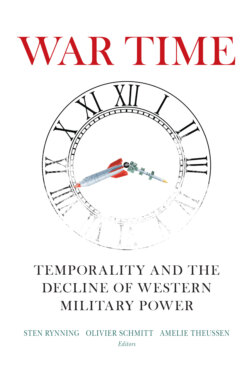Читать книгу War Time - Группа авторов - Страница 25
На сайте Литреса книга снята с продажи.
Speed, Pace, and Maintaining Policy Primacy
ОглавлениеAs the examples in this chapter suggest, policymakers and strategic prognosticators should guard against the siren’s song of tactical speed and the promise of rapid wartime success. They should instead remain grounded in the idea that tactical speed is important only as long as your wartime objectives remain limited. As they expand, the value of tactical speed gives way to the importance of operational and strategic pace. History suggests tactical speed is most useful in conflicts with minimalist aims that have little impact on the international status quo. The 1991 Gulf War, routinely hailed as the exemplar of rapid warfare, should be better remembered as a conflict defined by a status quo antebellum objective against a second-rate military force, requiring minimal mobilization of Western industrial bases or international support. Conversely, initial—often stunning—German success in the opening months of both World War I and World War II mattered little in the outcome of conflicts defined by maximalist aims. In both world wars the pace at which military potential (in terms of manpower and matériel) was transformed into military power (in terms of military units and weaponry), and the ability to sustain that transformation over time, proved the primary determinants of success. In both wars operational pace (defined as the ability to transform combat potential into combat power at or faster than the rate of battlefield attrition) was further backstopped by a sustained strategic pace, as national leaders were able to maintain international support and a coherent alliance structure. Here too Germany’s World War II failures prove instructive. Despite the stunning tactical successes of its lightning-quick military operations, Germany proved operationally unable to replace wartime losses at a rate that equalled or exceeded its losses. Strategically the picture was equally dismal. As the war progressed, German alliances dissolved, with Italy becoming a military liability and Russia an enemy, while the collective ire of the international community rose against the Nazi regime. Tactical speed may have carried Germany the first few miles of the marathon, but operational and strategic limitations left it limping the last. Similarly the initial clubfooted response of Western allies morphed into a jog, then a run, and ended with a sprinting array of military forces larger than at the start of the war. The allure of tactical speed and the underappreciation of operational and strategic pace allowed Germany to combine political logic and military action and—in many cases—subjugate the former to the latter. This is a lesson democratic leaders would do well to internalize as the contemporary fascination with tactical speed approaches yet another peak.
The most commonly repeated (and routinely overlooked) aspect of military strategy is that “war is simply a continuation of political intercourse, with the addition of other means.”27 As one delves into military strategy, extreme care must be taken to ensure that the speed of future warfare does not exceed and overtake political direction. Policy primacy must remain inviolate. The Prussian master himself also declared that “war cannot be divorced from political life; and whenever this thinking occurs in our thinking about war, the many links that connect the two elements are destroyed and we are left with something pointless and devoid of sense.”28 He further emphasizes this point, stating that “policy is the guiding intelligence and war only the instrument, not vice versa.”29 The modern obsession with tactical speed among Western militaries now threatens to make military decisions the guiding intelligence, relegating policy to the position of an afterthought.
The continued push for accelerated military operations risks outrunning the nature of democracies, as chapter 10 by Nina Kollars demonstrates. Unless directly attacked, Western democracies are, by nature and design, typically slow to wage war. Politics is messy and often slow, but routinely produces policy that represents the views and support levels of the governed. This clumsy but necessary process ensures democracies can generate and sustain the operational and strategic pace demanded by the conflict faced. The rush toward automated military decisionmaking and pre-delegated authority to take military action now threatens the democratic policy process.
The idea of employing weapon systems and undertaking “hyperwar” engagements that eliminate human decisionmaking threatens to divorce military activity from political oversight. In fact such a move could upend the relationship between military activity and policy, making policy reactive and therefore subordinate to whatever effects an AI-enabled military generates. While AI may perform well at optimizing military effectiveness, there is a real chance that these optimized military decisions will subvert political reality. As warfare concepts advance, defense strategists would be wise to ensure their preferred way of war supports the nature of the political apparatus it serves.
